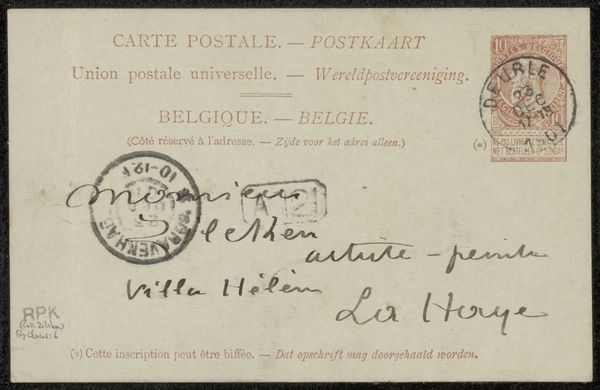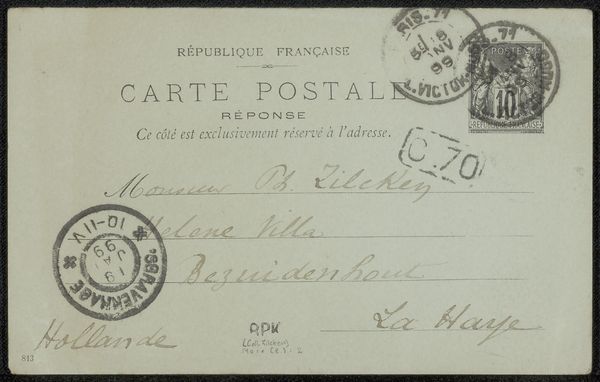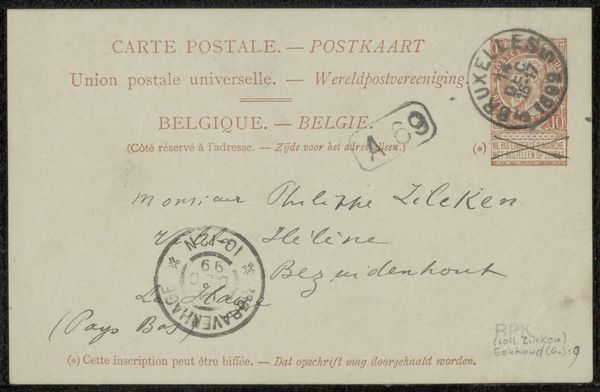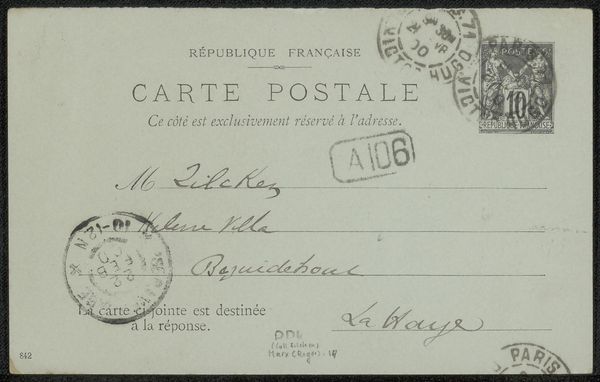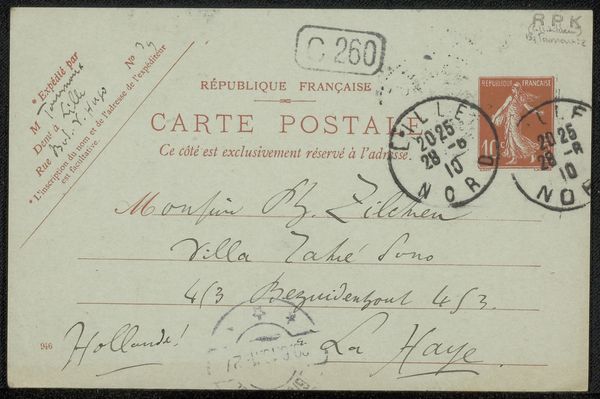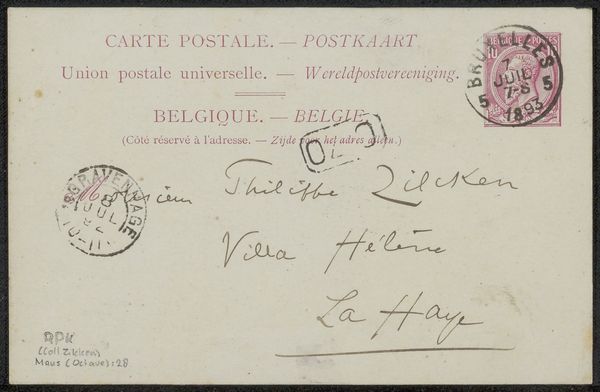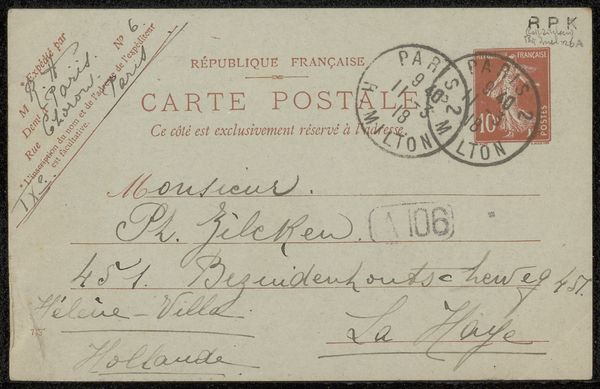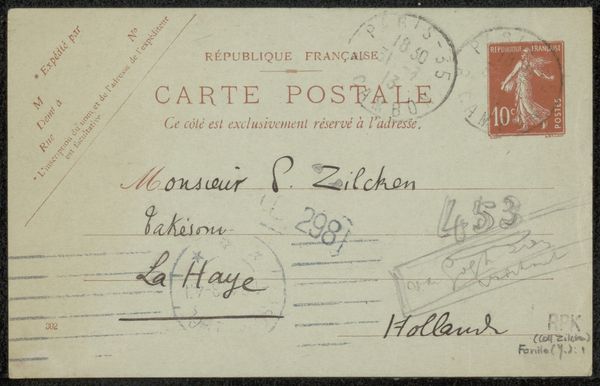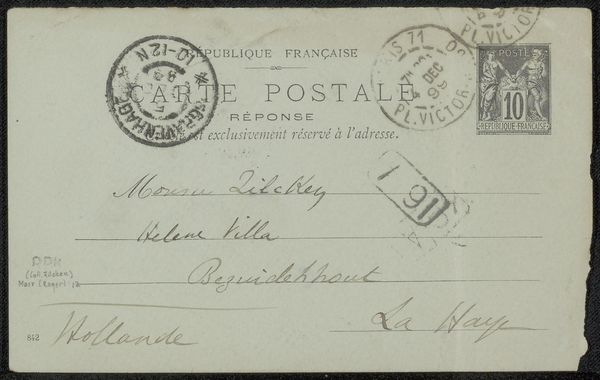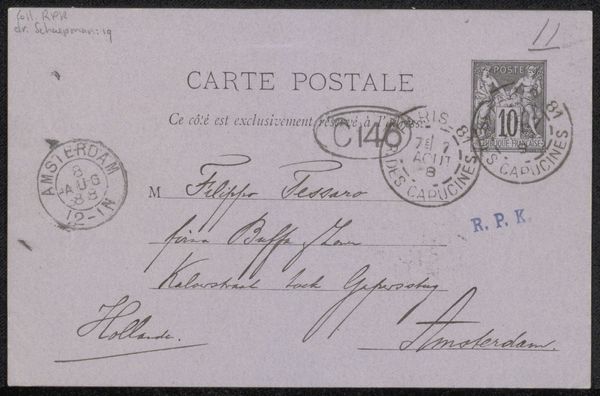
paper, ink, pen
#
script typography
#
hand-lettering
#
hand drawn type
#
hand lettering
#
paper
#
ink
#
hand-drawn typeface
#
pen work
#
pen
#
calligraphy
Copyright: Rijks Museum: Open Domain
Curator: Let's examine this interesting piece: a postcard titled "Briefkaart aan Philip Zilcken." It's believed to be from somewhere between 1881 and 1888. It's crafted with pen and ink on paper. The author? Adriaan Pit. Editor: It has a strange intimacy to it, don't you think? The casual hand script evokes a specific era but also a sense of direct connection to the writer, as if a moment frozen in time were right here. Curator: Indeed. Postcards offered a swift and rather public form of correspondence in those times, evolving into a crucial element of visual and social culture. Look closely at the imprints—they denote not only transit through postal systems but symbols of Swiss identity, the Helvetic cross and the use of three national languages, French, German, and Italian. Editor: Those rubber stamps definitely embed symbolism! It’s like the sender marked this little piece of paper not just with a message, but with mini-emblems that subtly declared geographical belonging and socio-political union in the days of grand hotels, world postal networks, and emerging nationhood. Even the postal rates implied participation in broader structures. Curator: Precisely, each little marking holds weight. The design embraces international movements while rooted with the aesthetics linked to A. Pit. Moreover, in a society where written communication carried enormous meaning, mastering elegant calligraphy and handwriting would communicate education and refinement to the world. Editor: The calligraphic style further encodes a form of identity and perhaps status, a subtle self-declaration on an object that had a function—carrying messages—and something more. We decode the intended message, the formal addressee…but the texture communicates too! All of that, I feel, adds depth that connects on emotional level despite existing solely on flat paper. Curator: And the postcard has journeyed across time, its survival indicative not merely chance, but perhaps its own testament its potential interest. It brings to question, though, if mass communications like postcards democratized culture. Or did those items still enforce and support pre-existing hierarchical standards, and access through things as easy accessibility to hotels in Swiss canton? Editor: Excellent question, truly. This card provides so much cultural density condensed onto single postal exchange. Curator: It has sparked interesting perspectives that surely enrich perception of this artwork. Editor: Indeed; it prompts seeing communication transcending utilitarian intentions when imbued cultural artifacts; revealing complex relationship social norms of past, right until it’s carried out across present!
Comments
No comments
Be the first to comment and join the conversation on the ultimate creative platform.
